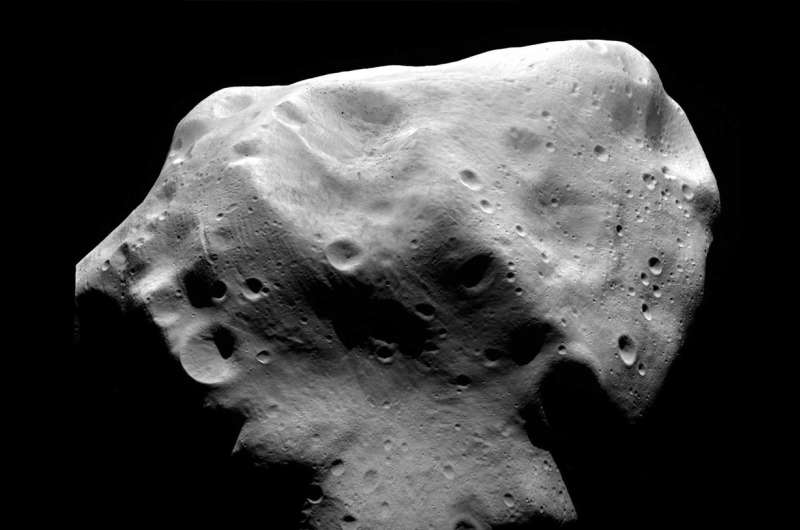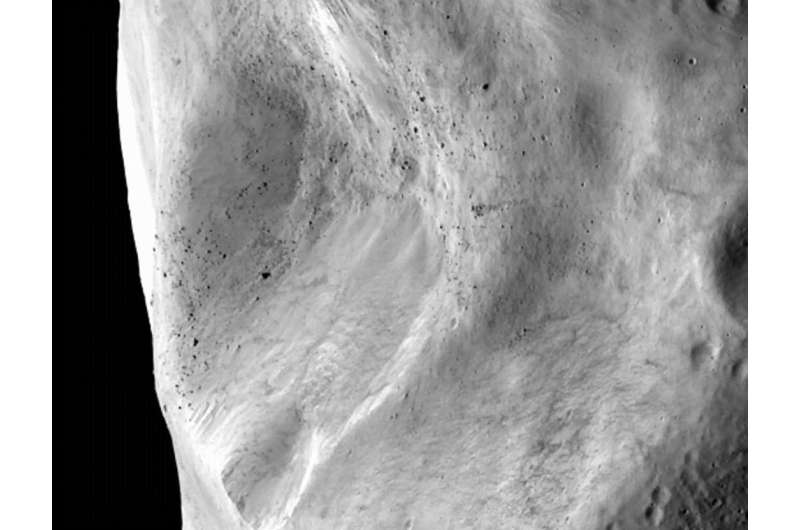Scientists reconstruct the history of asteroid collisions

An international study, in which Spain's National Research Council (CSIC) participates, reveals that asteroids have endured a multitude of impact strikes since their formation 4,565 million years ago. Scientists have reconstructed a timeline of these collisions using a physics-based model which reproduces the process through time, comparing its results with present-day information about chondrite meteorites. The work appears in the Astrophysical Journal.
According to the researchers, the size distribution of the objects which make up the asteroid belt between Mars and Jupiter indicates that these asteroids have been struck by projectiles of over 20 centimetres in size at least 100 million times. The resultant craters from these strikes are proportional to both the diameters and the velocities of these projectiles.
The information compiled on ordinary chondrites indicates that these meteorites originate from small asteroids which, with a diameter of less than a few hundred kilometres, collided, giving rise to these rocks millions of years ago. "Our work allows us to make fundamental predictions on the extent of breaking up from collisions, or the level of alteration by strikes due to impacts, which the huge majority of asteroids have experienced. It also explains the observations of the degree of alteration by strikes which appear in those chondrites which reach Earth", notes Josep Maria Trigo, CSIC researcher at Catalonia's Institute of Space Studies, in the Institute of Space Science.

In Germany's University of Braunschweig's labs, researchers Eike Beitz and Jürgen Blum, who led the research project, have carried out the impact simulation experiments. "These have been vital to understanding the physics of the process, and key in establishing the results of the impacts made by projectiles of such a varying range of shapes and velocities which occur naturally" Trigo points out. For his part, Gabriela Parisi, from the University of La Plata (Argentina), has put the physics model into practice utilizing a series of algorithms which reproduce the series of impacts between asteroids previously outlined, and has managed to replicate the collisions timeline.
The model replicates the external features of the asteroid, 21 Lutetia, established during the visit by the European Space Agency's Rosetta Mission probe. This is an irregular-shaped asteroid with a major axis measuring 121 km. 21 Lutetia has a heavily cratered surface- one crater reaching 55km in diameter- which shows clear evidence of the numerous collisions which have occurred ever since the beginnings of the planetary system. The model published in this work predicts that, as a result of fragmentation caused by large-sized projectile collisions, asteroids have huge slabs on their surfaces. The deposits of loose dust and rubble caused by this process, otherwise known as regolith, forms a surface layer a few kilometres deep. The article concludes that it is possible that a large number of the non-differentiated meteorites, or chondrites, which have reached the Earth come from these layers of regolith.
A number of space agencies are planning exploration missions to asteroids in order to bring back samples from their surfaces. The Japanese Space Exploration Agency's Hayabusa 2 and NASA's OSIRIS Rex will visit two primitive asteroids to collect samples which they will bring back to Earth. As the CSIC astrophysicist notes, "to be able to retrieve and analyse samples of the protoplanetary disc's formative materials which are in pristine condition, we will have to find asteroids between a few hundred metres and a few kilometres in size, which are homogeneous in nature".
More information: Astrophysical Journal, DOI: 10.3847/0004-637X/824/1/12
Journal information: Astrophysical Journal
Provided by Spanish National Research Council (CSIC)





















